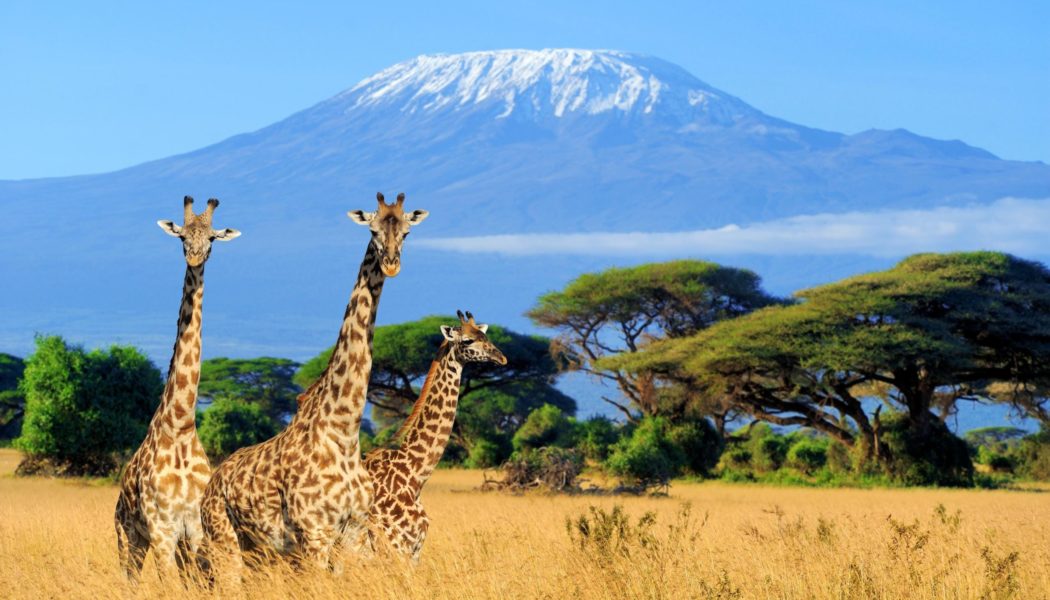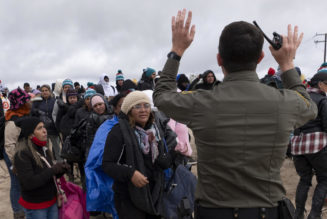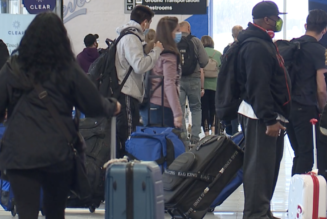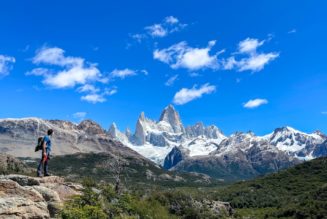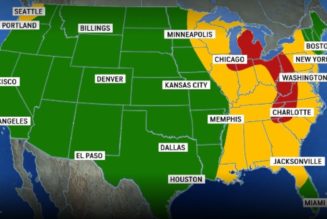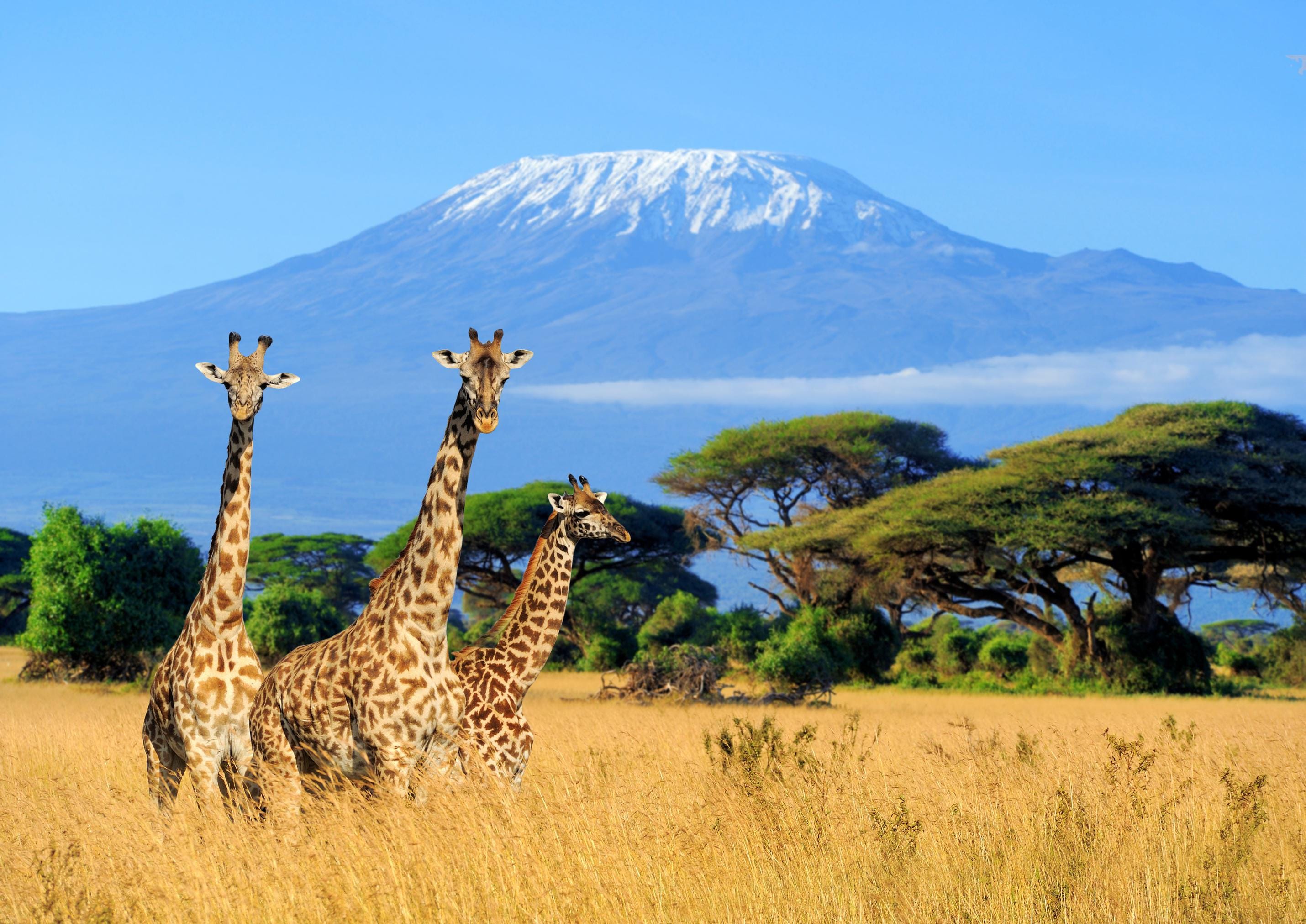
With travel back in a dramatic full swing, many travelers are looking for something new to tick off their bucket list, often visiting outdoor destinations over crowded cities. The ability to finally put into motion pre-Covid vacation plans (and the credits that were precariously on hold) are fueling the fire. With Africa and Asia now almost fully open again, both continents are getting their turn at a piece of the tourism pie.
A recent trend report (pdf) released during the recent World Travel Market Africa conference in Cape Town outlines many of the key reasons that Africa is ready to hit (and maybe even exceed) its pre-Covid stride. Here are five notable trends that shed light on why the continent is better positioned than ever before.
Easier airlift connectivity
United’s inaugural flight from Cape Town to its Washington Dulles last year.
A primary deterrent to travelers for far-flung destinations is the length of time it takes them to reach them. New nonstop flights from the U.S. and Europe to Africa are helping to improve the continent’s accessibility.
Both Delta and United have added new nonstop flights to Cape Town in recent years, and United joined Delta in adding a nonstop to Johannesburg. Ethiopian Airlines continues to fly to West Africa from the U.S. using Lome, Togo as an interim stopping point from Addis Ababa. A new nonstop flight (in one direction) from Addis Ababa to Atlanta will start this spring.
The inaugural flight from New York JFK lands at Nairobi, Kenya to great fanfare in October 2018.
Air Senegal added flights to New York and Washington D.C. while Rwandair continues to make headlines with its desire to fly to the U.S. as part of its new investment partnership with Qatar Airways. Before Covid, Kenya Airways announced its new nonstop flight from Nairobi to New York JFK, and it has increased the number of weekly flights ever since.
These types of efforts are not exactly new. As far back as 2016, things were already changing. One example was when South Africa’s Western Cape premier Alan Winde launched its air access initiative, which provided subsidies and support for airlines to add new service. It resulted in 13 airlines launching new nonstop flights from around the world.
Brussels, Belgium – May 21, 2022: RwandAir Airbus A330-300 airplane at Brussels airport (BRU) in … [+]
Euromonitor International’s data for 2022 shows that South Africa was the continent’s most popular tourist destination. Airlift plays a huge role in this demand. This model works around the world, but it is especially a key player in boosting travel to Africa.
Tanzania will actually top its pre-pandemic travel numbers based on data from ForwardKeys for the first quarter of this year. It is one of four countries in East Africa that showed top tourist demand, no doubt in part to the region’s focus on safaris. In West Africa, Ghana remains tops, and this comes as no surprise since it has nonstop connectivity to the U.S. from both Delta and United.
“Show traveling” becomes a trend
The “Made in South Africa” Tourism campaign was part of a relaunch to fuel visitors to the continent … [+]
During the pandemic, travelers binge-watched everything they could find, and travel-related shows became an obsession for some. Destinations boomed thanks to programs like Game of Thrones’ filming locations in Dubrovnik, Croatia and White Lotus being filmed in Maui and Sicily. Scotland saw big increases in travelers thanks to Harry Potter films. This has opened doors for travelers to be willing to discover new places, and it has led tourism offices to tap into that growing market.
Mosaic Lagoon Lodge in the Western Cape of South Africa
South Africa Tourism created a “Made in South Africa” collection of programming available around the world via Netflix. The exposure of regions around South Africa to potential travelers, who may have been unaware of the destination before, has led to positive results. The North American market is a big one for many destinations, and this “Netflix Effect,” as many have dubbed it has been successful.
Shamwari CEO Joe Cleote cites shows like Shamwari Untamed on Netflix and Shamwari Wildlife from Animal Planet leading to a direct booking curve.
He says, “Our show definitely helped us break into the market. Conservation documentaries on Netflix are very relatable to Americans.”
Visit Stellenbosch is one of the many tourism offices that used YouTube to give tours of the … [+]
Not all destinations are able to land a professional film crew, but YouTube proved a successful resource for many destinations on the continent. It helped to build connections with a global audience that then showed interest in wanting to travel there.
It’s not just Hollywood material. A plethora of local businesses created content that have created pent-up demand from tourism offices to local tour guides like those from guides at Stellenbosch on Foot in wine country.
New hotels that create buzz
Conrad Rabat Arzana opens this year in Morocco.
New hotel openings are a symbol of the pre-Covid forecast for demand on the continent, and the number of recent openings reiterates the hospitality industry’s strong forecast for the region.
Nobu, the restaurant and hospitality brand, arrived in Africa with the January opening of Nobu Hotel Marrakech. It has 71 suites, a rooftop garden and circular pool overlooking the historic old walls of the city. Morocco is seeing many new hotel openings including the new Fairmont La Marina Rabat-Salé later this year.
Not to be outdone in the country is the Conrad Rabat Arzana, which is said to have the nation’s largest premium suite at nearly 7,000 sq ft. and brings Hilton’s luxury portfolio to northwest Africa.
Hilton brings the Curio Collection brand to Kenya.
Hilton continues the momentum with Kwetu Nairobi, Curio Collection by Hilton offering a jumping off point for those with points looking to earn or burn them en route to a safari. Located on the edge of the Karura Forest, but not far from the city’s business district, it serves both leisure and business travelers.
In Tunisia, Hilton will open Hilton Skanes Monastir Beach Resort later this year along the Mediterranean coastline. Also in northern Africa, Hilton will bring its Waldorf Astoria brand to the Heliopolis neighborhood of Cairo.
JW Marriott enters the game lodge space in the Masai Mara.
For those venturing further, the new JW Marriott Masai Mara Lodge brings a points-earning or redemption option for Marriott Bonvoy travelers on safari. It features guest tents, some of which can be connected together for families with riverview private terraces.
Off the continent’s east coast, laïla, Seychelles, a Tribute Portfolio Resort, part of the Marriott Bonvoy collection, on the Seychelles’ largest island adds another hospitality option to the African island nation. Until now, there have not been many ways for travelers to earn or redeem points there.
Natural Selection opened Duke’s Camp in the northern Okavango Delta of Botswana, made almost entirely from upcycled materials. The six-bed Great Plains Okavango Explorers Camp, also in Botswana, sits within the private Selinda Reserve and delivers an old-fashioned, 1920s safari experience.
The iconic ducks that help patrol the environmental safety for the grapes and other produce at … [+]
Wine estates are also boosting their hotel room options, which are proving popular, especially with Americans. The owners of Vergenoegd Löw are adding a host of new accommodations coming later this year, and Jordan Wine Estate will be converting the owner’s former residence into a luxury accommodation overlooking the vineyards.
Sustainability and giving back remain key
Industry on the continent is placing greater focus on sustainability, which is key for the planned … [+]
African destinations, by nature of the fragility of their environments and lack of resources, are often more well-versed on sustainability efforts than others parts of the world. Many visitors recognize this and may even choose a trip there for that reason.
Data from a World Travel & Tourism Council (WTTC) and Trip.com Group report confirm the sentiment showing that nearly two-thirds of travelers are looking for sustainability efforts when they travel. It also includes the ability to be able to support the local community, and there are many support initiatives like Pack for a Purpose and Micato Safari’s AmericaShare program supporting childrens’ education in East Africa that add the icing on the cake when travelers are deciding where they want to go.
Beach and Twelve Apostles mountain in Camps Bay near Cape Town in South Africa. To maintain the … [+]
This also calls into question claims of “greenwashing” with travelers placing a greater focus on wanting to know if the claims that travel vendors are making are true. The term refers to brands that make eco-friendly efforts a key part of their marketing message, but may be glossing over some of the actual reasons.
Many travelers see this on a daily basis when hotels claim that re-using linens and towels is for environmental purposes, when most know it is a money-saving technique. The same goes for airlines that want to take cash from travelers for their carbon footprint to replant trees or donate to environmental charities, but use their brand name as the donor when it is coming from travelers.
Micato-AmericaShare supports local communities and also makes donations for each traveler that books … [+]
Travelers are becoming more savvy about green initiatives. They want to do business with brands that mean what they say and do it for the environment rather than for show.
Problems like loadshedding, when electricity to certain areas is completely shut off at certain hours to conserve energy, have become more prominent. Many businesses have taken the initiative themselves to do their part to become more sustainable while making the experience more seamless for guests.
Like many other properties across the continent, Vergenoegd Löw relies on solar energy, which is a growing (albeit expensive) trend in the region that takes time to recoup costs.
The Fynbos in Cape Town will be Africa’s first biophilic building.
It’s not just hotels and wineries taking notice, other businesses and attractions are, too. Cape Town will be home to Africa’s first biophilic building, The Fynbos, that will be a mixed-use building in its downtown with an urban art gallery boasting over 1,000 pieces of art from 120 graffiti artists spanning nearly three dozen African countries.
This type of architecture incorporates natural ventilation, lighting and landscape features in its design for a healthier environment. The façade of the building will be a vertical garden made up of 30 species of indigenous trees and 20 species of shrubs, which help manage its climate control and energy use. “Flying” gardeners will tend to its design.
Younger travelers with bigger budgets
Gen Z travelers are willing to spend more on long-distance travel.
It used to be that upmarket travelers skewed older in age, sometimes using retirement savings or executive salaries to fuel their luxury travel. These days, there has been a marked shift. World Travel Market Africa’s latest trend report cited that by 2026, almost two thirds of all travel spend will be from Millennials and Gen Z travelers.
This means that brands are shifting their attention to not just Baby Boomers, but also working to make their marketing efforts and products more compatible with what younger travelers want. Digital nomads and those that work remotely are a key focus, especially as this post-Covid trend grows.
Famed Stellenbosch based bakery with outdoor drinking and eating facilities, popular with the laptop … [+]
Preferring to use one home base from which they can explore multiple destinations, the trend works well in places within easy proximity to multiple sites. Take Stellenbosch, South Africa, for example. It is within a short drive of Cape Town, but offers the serenity of its winelands and bustling college town vibe to draw younger travelers for remote working.
A leading destination among younger travelers is Namibia, which saw a 131% increase in visitors this year compared to the same period in 2019, according to ForwardKeys Actual Air Tickets Data. Namibia even created its own digital nomad visa to help boost tourism. Cameroon also saw triple-digit growth.
Gemsboks (Oryx gazella) in their typical desert habitat in the Namib Desert. Digital nomads can work … [+]
“Namibia is fast becoming a digital nomad hot spot in Africa, not just for its newly introduced six-month digital nomad visa (the first in mainland Africa), but because it’s an affordable long-stay destination,” says Iga Motylska, author of the Namibia chapter of the recently published “The Complete Guide to African Safaris,” from Fodor’s.
“American travelers, especially, seem to be extending their holidays to take advantage of Namibia’s digital nomad visa, particularly as it is only six hours ahead of the U.S. east coast much of the year,” adds Motylska.
The picnic pods at Jordan Wine Estate are proving popular with remote workers.
Many destinations have created the ideal experience for digital nomads, and these go beyond hotels to include apartment buildings and even wineries. Stellenbosch’s Jordan Wine Estate even offers remote working setups where it can place a desk in the garden, complete with unlimited coffee and wireless internet, overlooking the wine lands. It also has private bush picnics where people can dine and work in the privacy of nature.
It’s not just digital nomads, but business travel as a whole that is booming on the continent. Mauritius launched a refund program for meeting and incentive groups giving event organizers as much as 15% back in the form of a tax refund for hosting events there.
Group travel is on the rise across the continent.
Elizabeth Gordon, founder and owner of Extraordinary Journeys for the U.S. market agrees and adds that group travel is on the rise. She estimates that one quarter of bookings typically is for more than 10 people traveling together. Friends and family want to reconnect and enjoy memorable travel experiences more than ever.
This also includes activities for children. Gordon reinforces that idea saying, “it’s not only about game drives anymore.”
A tourist visits Maasai school in Amboseli, Kenya. This little school in Kenya has about 250 … [+]
There is a greater need to please upmarket and travelers of all ages visiting Africa with more immersive and educational experiences. “Lodges need to offer other inspiring activities like walking safaris, community experiences and cooking classes. They must also ensure their guides know how to cater for children through engaging kids’ programs,” she adds.
As the world resets post-pandemic, destinations that may have seemed more remote and exotic are quickly turning more mainstream. It’s about time.
